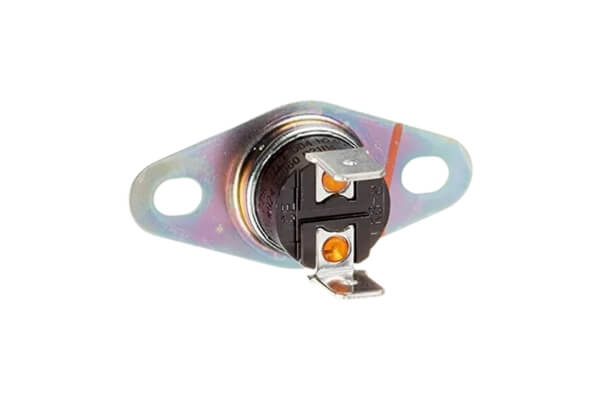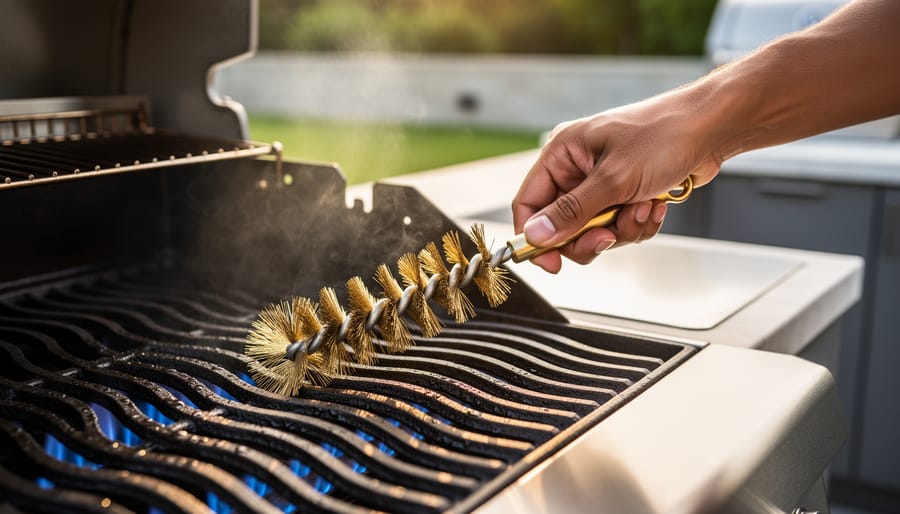Hey there! Have you ever wondered if electric stoves have fuses? Well, I’m here to give you all the information you need.
As someone who loves cooking and enjoys the freedom of using an electric stove, it’s important to know how these appliances work and what keeps them running smoothly.
In this article, we’ll explore everything about electric stove fuses. We’ll start by answering the question, ‘Do Electric Stoves have Fuses?’ Then, we’ll delve into where these fuses are located in your electric stove and discuss their functions.
You’ll also learn about the different types of fuses commonly used in electric stoves and the difference between a plug fuse and a carriage fuse.
If you’ve ever wondered whether you can replace a fuse in your electric stove yourself or how to identify signs that your fuse needs replacement, we’ve got you covered. And don’t worry – if your fuse has blown, we’ll also guide you on how to fix it.
So sit back, relax, and let’s dive into the world of electric stove fuses together!
Do Electric Stoves have Fuses?
Yes, you’ll be glad to know that electric stoves do have fuses! They’re like superheroes that protect your stove from going up in flames due to electrical overload. So rest easy and keep cooking those delicious meals!
Safety precautions are essential for any appliance, especially those that generate heat. Electric stoves are equipped with fuses as a crucial safety measure. These fuses are a barrier against excessive electrical current, preventing the stove from overheating and potentially causing a fire hazard. By blowing the fuse, the power to the stove is automatically shut off, ensuring your safety and the protection of your home.
It’s important to understand this feature and regularly check and replace blown fuses to maintain optimal safety while using your electric stove.
Where Are The Fuses Located in An Electric Stove?

Located either under the cooktop, in the back of the oven, or in a separate fuse box, fuses in an electric stove can be found in various places depending on the make and model. If your electric stove isn’t functioning properly, checking the fuses for potential problems is important.
Common fuse problems in electric stoves include blown fuses or loose connections. Blown fuses can occur due to power surges or electrical issues and must be replaced with new ones of the same rating. Loose connections can cause poor electrical conductivity and require tightening or replacing the affected parts.
It’s recommended to consult the stove’s user manual or contact a technician if you need help locating or resolving fuse-related issues in your electric stove.
Functions of Fuse in Electric Stove
The fuse in an electric stove is crucial for ensuring the safety of your home and loved ones, preventing potential disasters caused by electrical overloads or short circuits. It serves multiple functions that help protect both the stove and the user.
Firstly, it safeguards against electrical overloads by blowing if the stove draws more current than it should, preventing overheating and potential fires.
Secondly, it protects against short circuits by interrupting the current flow when there is a direct connection between live and neutral wires, damaging the stove.
Lastly, it helps to prevent electrical shocks by blowing if there is a ground fault in the stove’s grounding system.
By performing these functions, electric stove fuses play a vital role in maintaining safety and peace of mind in your kitchen. Frequently asked questions about electric stove fuses include their amperage rating, location within the appliance, and how to replace them if they blow.
Different Types of Fuses Used in Electric Stoves
Ensure you know the different types of fuses used in your electric stove to ensure optimal safety and functionality.
Electric stoves typically use two main types of fuses: plug-type fuses and cartridge fuses.
Plug-type fuses are the most common type and have a threaded metal base with a flat top marked with an amperage rating. These fuses have a visible fusible link through a glass window on top, making it easy to determine if they’ve blown.
On the other hand, cartridge fuses are larger and have a metal case. They’re usually used in high-current applications, such as the oven element in an electric stove.
It’s important to know which type of fuse your electric stove requires to replace them correctly and maintain proper functionality.
Difference Between a Plug Fuse and A cartridge Fuse
Cartridge fuses, with their larger size and metal case, provide robust protection for high-current applications like the oven element in an electric stove. Unlike plug fuses, cartridge fuses are designed to handle the increased power demands of a 240-volt circuit.
The metal case of a cartridge fuse not only offers durability but also acts as a heat sink, dissipating excess heat that may be generated during operation. This ensures reliable performance and prevents overheating and potential damage to the electrical system.
Another benefit of cartridge fuses is their enclosed fusible link, housed within a tube of insulating material. This design provides added safety by preventing contact with the fuse’s live components. Additionally, the visibility of the fusible link through a glass window allows for easy inspection and identification of any blown fuses.
Overall, cartridge fuses offer superior protection and reliability for high-current applications in electric stoves. Their larger size and construction make them ideal for handling demanding power requirements while ensuring safety and peace of mind.
Can I Replace the Fuse in My Electric Stove Myself?
Now that we understand the difference between a plug fuse and a cartridge fuse, let’s move on to the next question: Can I replace the fuse in my electric stove myself?
The answer is yes; you can usually replace the fuse in your electric stove without needing to call a professional. The location of the fuse may vary depending on the make and model of your stove, but it is typically found under the cooktop or in the back of the oven.
To replace the fuse, you must first disconnect power to your stove. Then, locate the fuse and carefully remove it using pliers or a screwdriver. Take note of its specifications and purchase an exact replacement from a hardware store.
Finally, insert the new fuse and restore power to your electric stove. Remember always to follow proper safety precautions when working with electricity. Fuse replacement is generally a straightforward process that can save you time and money by avoiding unnecessary service calls.
Signs that The Fuse in My Electric Stove Needs Replacement?
One of the telltale signs that your electric stove’s fuse needs replacement is if it emits a burning plastic smell. This odor indicates that the fuse has blown and caused a short circuit, which can be dangerous if not addressed promptly.
When you notice this smell, it’s crucial to take safety precautions before attempting any repairs:
- Make sure to turn off the power supply to your stove by switching off the circuit breaker or unplugging it from the wall.
- Avoid touching any part of the stove until it’s cooled down completely to prevent burns or electric shocks.
- Consult a professional for assistance replacing the fuse as they have the knowledge and experience to handle electrical components safely.
Safety should always be prioritized when dealing with electrical appliances.
How Do I Know if The Fuse in My Electric Stove Has Blown?
To determine if your electric stove’s fuse has blown, simply check for visual signs of damage or use a multimeter to test its continuity. Inspect the fuse for any visible breaks in the metal strip inside. If it’s broken, the fuse is blown and must be replaced.
Alternatively, you can use a multimeter set to the continuity setting and touch the probes to the two terminals of the fuse. A beep from the multimeter indicates that the fuse is still good, while no beep means it has blown and requires replacement.
Some common symptoms that may indicate a blown fuse include: the stove not turning on, elements not heating up even when turned on, hearing a clicking noise when attempting to turn on the stove, or detecting a burning plastic smell.
If any of these symptoms are present, along with visual or multimeter confirmation of a blown fuse, it’s necessary to replace it before using your electric stove again. Fuse troubleshooting is essential in maintaining the proper functioning of your electric stove.
How to Fix a Blown Fuse in Electric Stove
When repairing a blown fuse in an electric stove, following these steps is crucial for safe and effective troubleshooting.
First, unplug the stove to ensure your safety while working on it.
Next, locate the fuse, usually found under the cooktop or in the back of the oven. Use a screwdriver to unscrew and remove the old fuse.
Look closely at the metal strip inside the fuse – if it’s broken, it is blown; if it’s intact, then the fuse is still good.
Purchase a new fuse with the same amperage rating as the old one and install it by screwing it in place.
Finally, plug in the stove and test it to ensure everything functions properly.
Potential Discussion Idea: One common cause of blown fuses in electric stoves is overloading them by running too many appliances simultaneously on the same circuit.
Also, Check:
- How Hot Do Electric Stove Burners Get?
- Can You Use Non Stick Pans on Electric Stove?
- How Long Can You Leave the Electric Stove On?
Conclusion
In conclusion, electric stoves do have fuses that are essential for their proper functioning. The fuses in an electric stove are typically located near the control panel or at the back of the appliance. These fuses protect the stove from electrical surges and prevent damage to its components.
Different types of fuses are used in electric stoves, such as plug fuses and cartridge fuses, each with unique characteristics. If you experience any issues with your stove, it’s important to check if the fuse has blown and replace it if necessary. However, it’s recommended to seek professional assistance for fuse replacement to ensure safety and proper installation.






